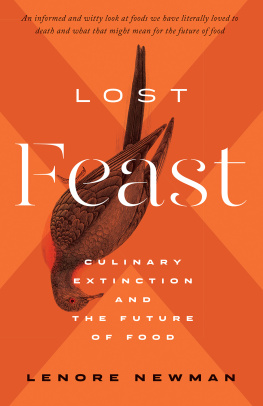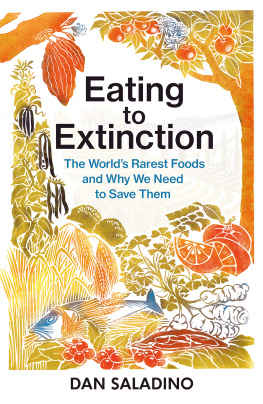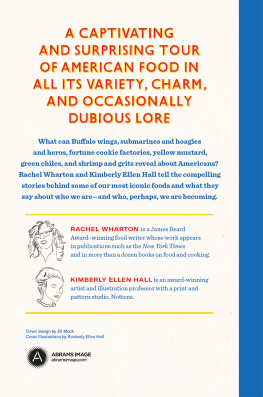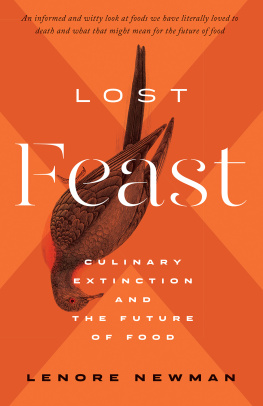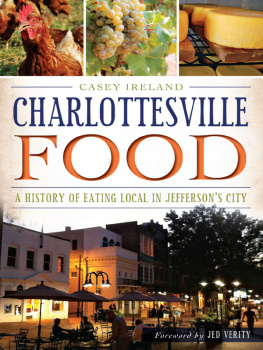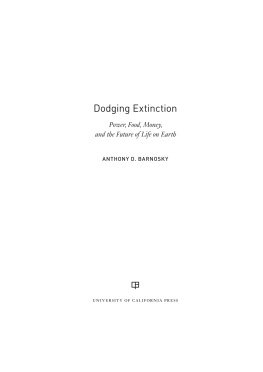Chapter One
Silphium
It began with butter, a surreal amount of butter, glistening with tiny pinpricks of fat. It was studded with fragments of fresh herbs and whipped nearly to a foam. There was bread as well, but it was a supporting character. It too was excellent, a dark rye loosely stacked in rough slices on the right-hand side of a plate-sized slab of black lava rock. The butter was mounded up on the left side, a lump the size of a Christmas orange, melting gently where it lounged against the warm stone slab. The stone itself was of the same sort found in the walls of the restaurant and rimming the pool of steaming azure water outside the window. This stone played hide and seek among the drifting snow from here to Reykjavk. I took a moment to gaze out on the falling flakes and on the tall blond bathers reveling in the shimmering water. Some perched on the rocks, and others floated in the pools volcanic embrace. Id spent the morning there, and after the meal, and perhaps a short period of digestion, I would return. But for now, there was butter.
I plucked another slice of bread from the slab and spread it liberally with butter. The fresh herbs, tiny leaves and twigs I couldnt recognize, gave off the smell of a summer mountaintop. My grandmother liked butter, I thought to myself, my mind rambling in the manner of the solitary diner. My grandmother would have approved of this excess. I settled into my chair and took a slow bite, savoring the flavor and texture. I had a long lunch ahead of me and yet I was probably going to eat the whole lump of glorious butter. Slowly, the stress of the last few days, the snow, the cold, all melted away.
I was in Iceland to study the food of hard places. I had copious notes from my fieldwork in Newfoundland as a comparison, full of tales of cod tongues, salt pork for Sunday dinner and seal flipper pie. Now here was another island on the ragged northern edge of the world, full of friendly people, tidy settlements and interesting cuisine. Iceland is conveniently located between the December gloom of London, where I had just been, and the December gloom of Vancouver, where I needed to be. On the plane from Heathrow, Id perched on the edge of my seat, excited to expand my horizons, meet new people and see new things. And, of course, excited to eat. My optimism had dwindled once Id landed. Twilight gave way to driving snow, and the bus from the airport began to fishtail in the darkness. Out in the night, impossibly neat cottages were barely visible. None of this seemed to concern the jolly older man sitting beside me. He was happy to engage me in a one-sided conversation about the joys and struggles of being an aurora scientist in northern Scotland. He talked the way older men talk, alive with the joy of having an interested audience. At home, he had plenty of the darkness needed for his craft, but it was far too overcast. Instead, he spent time in Siberia and Iceland, supplementing his scientific work by giving aurora tours to wealthy tourists. I looked out the window, skeptical of his chances for success. I couldnt even tell where the sky ended and the forest began. The wind began violently rocking the bus. I could see the driver tense his arms; his knuckles were white under the occasional streetlight. The aurora scientist frowned at the snow. He shrugged.
Dont worry, it will clear. Behind this storm, it will be clear and still.
Dont you get cold, watching the aurora all night?
Oh, its a dry cold. You hardly notice it.
Im here to study food.
Oh, thats grand. Such fish and dairy. Be wary of the shark, though.
He shuttered a little and turned to the window, lost in contemplation of the darkness. The bus slid merrily across the road, the driver cursing in a melodic tongue. I burrowed into my coat and hoped that the hotel would have room service and maybe a sauna.
Iceland is awash in interesting food. I talked to restauranteurs in the snow and dark. I visited thermal greenhouses in the snow and dark. I chatted with ice-eyed fisherman in the snow and dark next to an ocean of such a forbidding temperament I couldnt turn my back on it.
I loved it. The noonday sun barely graced the horizon long enough to cast a glow on the mountains across the ice-choked harbor. I enjoyed tasting everything I could get my hands on, prowling the streets like a hungry wraith of midwinter. I ate fish as fresh and delicate as snowflakes. I did end up nibbling the fermented shark meat Id been warned about and regretted it for several hours as the smell and taste hung on me like a pungent ghost. I munched on lichen. I tossed back salads grown with the heat of volcanos and ate bread cooked in the ground. I ate a great quantity of skyr, the yogurt that is really a cheese made from the milk of the Icelandic cattle descended from cows brought from Norway in the tenth century. They are now a distinct product of their harsh home, small in stature and few in number, with only thirty thousand lactating cows working to fill the breakfast bowls of Iceland. They are unusual cows, their coats pied or brindled in six colors, as plush as cats. They are tended on 700 farms that tuck into fertile valleys along the coast, where they eat the local vegetation in small plots of pasture, isolated for a millennium from the rest of cattle kind. The Icelandic cow is different, and its milk extremely high in protein and low in fat passes that difference along to the sort of butter one can eat by the spoonful. As my aurora watcher noted, the dairy was sublime. This place and its people have existed for centuries by the graces of fish, cows and sheep.
The world has found Iceland. Tourists flood the streets of Reykjavk. Skyr, so rich and wonderful, is an increasingly prized export in a food-obsessed world. So prized, in fact, that the cows of Iceland cannot possibly keep up with demand. A possible solution would be to crossbreed Icelandic and Norwegian cows to increase production per acre, but in the process the purebred Icelandic cow would likely go extinct from introduced disease and genetic mixing. There is no real way to make the magical cloud of butter brooding on a slab of volcanic rock available to a wider audience without making it into a pale copy of itself. That butter emerged from centuries of harsh landscape and slow cattle-breeding combined with skilled preparation. To lose the butter of Iceland, and the foods like it, would be a great loss.
Many of the unique foods that help to make the world a diverse and interesting place are in danger. The forces of globalization, industrialization and ecological collapse threaten the wealth of culinary products that make our cultures distinct. Some of these foods are becoming rare, some are becoming much more expensive and some face outright extinction. Some have already become extinct.

